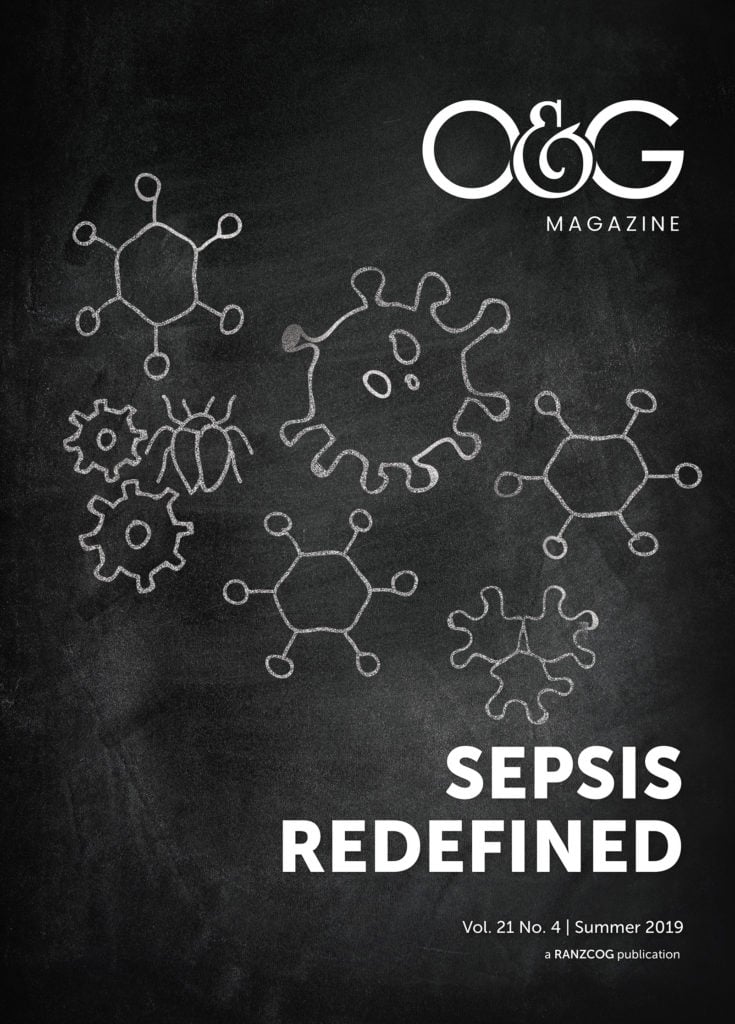Streptococcus agalactiae, commonly referred to as Group B Streptococcus (GBS) is an encapsulated beta-haemolytic Gram-positive organism associated with invasive neonatal disease and maternal sepsis.
Epidemiology
It is estimated that in 2015, 21 million live births worldwide were exposed to GBS through maternal colonisation, with an associated rate of 205 000 cases of early-onset disease and 90 000 cases of infant mortality under three months of age. Worldwide, at least 57 000 stillbirths, and up to 3.5 million preterm births per annum may be ascribed to GBS disease, though this is likely to be an underestimate, particularly in developing countries.1 There is significant variation by geographical region, and of note, GBS rates are far lower in neighbouring South East Asian countries where Gram-negative pathogens, particularly Escherichia coli and Klebsiella pneumoniae, are the predominant cause of early-onset sepsis of the neonate.2 GBS remains the most common cause of early sepsis of the neonate in Australia, with an incidence of 0.43 per 1000 live births, and mortality rate of 11 per cent.3
Clinical manifestations
GBS disease of the infant may be defined as early or late onset. Early-onset disease, occurring in the first six days of life, can manifest as sepsis, respiratory distress, pneumonia or meningitis, and is associated with colonisation of the maternal genitourinary and gastrointestinal tracts. Late-onset disease, occurring between 7 to 89 days of life, often presents with sepsis accompanied by bloodstream infection, meningitis and, in some cases, osteomyelitis, septic arthritis or skin and soft tissue infections. Late-onset disease is attributed to acquisition of GBS after birth. GBS disease of the infant has significant long-term morbidity, particularly if complicated by neurodevelopmental disability.4 Maternal GBS disease with ascending infection causing fetal infection and chorioamnionitis is complicated by stillbirth and preterm birth. Although uncommon in developed countries, maternal GBS sepsis is associated with significant morbidity, prolonged hospital admission, including the need for intensive care supports and a longer infant admission in neonatal special care units.5
Prevention
Intrapartum antibiotic prophylaxis (IAP) reduces vertical transmission, with subsequent reduction in maternal and neonatal morbidity and mortality from invasive GBS disease. This strategy targets women with known GBS colonisation and/or the presence of risk factors including GBS bacteriuria, a previous infant with GBS disease, preterm labour, premature or prolonged preterm rupture of membranes, or maternal fever. Challengingly, up to 50 per cent of neonates with invasive GBS disease have no identifiable risk factors. The risk of early onset GBS varies according to IAP policy. Without an IAP policy, the risk of early onset GBS disease is 1.1 per cent. As IAP coverage increases, the risk of early onset GBS decreases in linear association. Based on regression modelling, the risk of early onset GBS is 0.3 per cent in settings with 80 per cent IAP coverage through universal screening programs, compared with 0.8 per cent in settings with 50 per cent coverage with clinical risk factor-based strategy.6
There is no international consensus on whether universal microbiological screening or risk-factor assessment is the superior approach to intrapartum antibiotic prophylaxis. The Australian Government Pregnancy Care Guidelines recommend either routine antenatal testing for GBS colonisation or a risk factor-based approach to prevention, depending on organisational policy.7 The New Zealand Consensus Guidelines recommend a risk-based GBS prevention strategy as the most clinically and cost effective approach.8 The RANZCOG guideline, updated in July 2019, recommends ‘all maternity services should have an established plan for prevention of early onset GBS. Universal culture-based screening using combined low vaginal plus or minus anorectal swab at 35–37 weeks gestation, or 3–5 weeks prior to anticipated delivery in high-risk pregnancy, such as poorly controlled diabetes, multiple pregnancy, or a clinical risk factor-based approach, are both acceptable strategies for reducing early-onset GBS. Low vaginal and anorectal swabs for GBS screening should be incubated in enriched media to achieve acceptable sensitivities; and intrapartum antibiotic prophylaxis with intravenous penicillin-G or ampicillin should be offered to all women at increased risk of early onset GBS’.9
Similarly, the US guidelines recommend universal microbiological screening and the UK a risk-factor based approach. The lack of consensus on screening relates to a lack of good-quality randomised controlled trials and conflicting evidence. 10 In the UK, the GBS11 trial is approved to commence in April 2020 with three investigation arms comparing rapid test in labour, 35–37 week swab and risk-factor based administration of intrapartum antibiotic prophylaxis.12
GBS can cause ascending infection, which is complicated by stillbirth and preterm birth. The pathogenesis for this is not well understood, but it is postulated that intrapartum antibiotic prophylaxis not only reduces colonisation and vertical transmission, but also possibly provides early treatment of fetal infection and chorioamnionitis. Intrapartum antibiotic prophylaxis only reduces early-onset GBS. It does not affect stillbirth or preterm birth rates and has not been shown to have a reduction in late-onset GBS disease.
Exposure to antimicrobials is not without risk. Previously undocumented penicillin allergy may result in intrapartum anaphylaxis, and the implications of broad-spectrum antimicrobial therapy on both the maternal and neonatal microbiome are yet to be fully understood. Initial concerns were raised that intrapartum antibiotic prophylaxis would lead to a rise in non-GBS early-onset sepsis, and an initial trend was seen in the US towards higher rates of Gram-negative early onset sepsis.13 Longitudinal studies, however, have shown the rates of Gram-negative early onset sepsis have remained stable over time, and this continues to primarily affect very low birth weight preterm infants.14 Antenatal GBS vaccines are in development and, if efficacious, may be a more successful prevention strategy than intrapartum antibiotic prophylaxis, one which could also reduce the rates of stillbirth, preterm birth and late-onset sepsis attributed to GBS.
Laboratory diagnosis
A major limitation of GBS screening and prevention programs is reliance on accurate laboratory detection of GBS carriage. Women typically collect a combined low vaginal and anorectal swab for testing at 35–37 weeks gestation. The addition of anorectal collection increases the sensitivity by up to 10 per cent and the use of selective enrichment broth, with incubation prior to testing, further improves the yield.
Culture-based methods involve subculture from broth onto selective chromogenic agar plates. These are incubated and growth of colonies are identified as GBS by morphology and confirmed by mass spectrometry. Culture provides reliable testing with standardised susceptibility-testing methods; however, the turnaround time may be up to three days.
Polymerase chain reaction (PCR) with nucleic amplification testing (NAT) assays targeting the CAMP factor or surface immunogenic protein genes of GBS is another approach to screening. NAT has superior sensitivity over culture for the detection of GBS, with the added benefit of shorter turnaround times. Traditionally, PCR testing has occurred in the laboratory, in batched runs, with a turnaround time of 24–48 hours from collection. Culture and PCR testing at 35–37 weeks’ gestation will not detect the acquisition of GBS in the intervening period prior to delivery.
Point-of-care (POCT) intrapartum molecular screening is a newer technology that can provide qualitative analysis of the presence of GBS in the genitourinary and gastrointestinal tract at the time of delivery. The benefit of this is 24-hour access to a highly sensitive test, with real-time analysis of the presence of GBS. This is associated with significant decrease in the rate of early onset GBS disease and antibiotic use in neonates. Although POCT is significantly more expensive than traditional laboratory testing, these costs can be offset, at least in part, by the reduction in early onset GBS incidence and disease treatment costs.15
PCR testing provides no information about antimicrobial susceptibility, an important disadvantage in the setting of maternal beta-lactam allergy. GBS is almost universally susceptible to penicillin/amoxicillin and cefazolin. In the setting of allergy, the Australian Guidelines recommend intrapartum erythromycin or clindamycin. Australian antibiogram data demonstrate erythromycin resistance in 6.4 per cent and clindamycin resistance in 4.2 per cent of GBS isolates.16 Thus, antimicrobial susceptibility testing remains essential for pregnant women with known severe and immediate IgE mediated beta-lactam allergy such as anaphylaxis. If susceptibility results are not known and the patient is penicillin allergic, intravenous vancomycin is recommended due to increasing GBS resistance to clindamycin.
Other prevention strategies may include development of a vaccine against GBS, overcoming some of the limitations of intrapartum antibiotic prophylaxis coverage, and lack of efficacy in reduction of stillbirth and late-onset GBS. Future developments may incorporate common resistance mutations in POCT, making this a possible screening modality for the penicillin-allergic patient.
Conclusion
Early-onset GBS is an important cause of neonatal sepsis, and intrapartum antibiotic prophylaxis reduces this burden. What remains to be determined is the best strategy for defining who should receive intrapartum antibiotics. Intrapartum antibiotic prophylaxis does not affect stillbirth rates and has not been shown to have a significant reduction in late onset GBS. Prevention by vaccination is in development and may be a future possibility.
Key points
- Early-onset GBS disease is an important cause of neonatal sepsis
- All maternity services should have an established plan for prevention of early-onset GBS
- Document ‘severe penicillin allergy’ on the pathology request form to facilitate antimicrobial susceptibility testing
- Point of care testing is a promising, but expensive, technology for intrapartum detection of GBS
References
- Seale AC, Biachi-Jassir F, Russell NJ, et al. Estimates of the burden of group B streptococcal disease worldwide for pregnant women, stillbirths, and children. Clin Infect Dis. 2017;65(S2):S200-19.
- Downie L, Armiento R, Subhi R, et al. Community-acquired neonatal and infant sepsis in developing countries: efficacy of WHO’s currently recommended antibiotics—systematic review and meta-analysis. Arch Dis Child. 2013;98(2):146-54.
- Singh T, Barnes EH, Isaacs D, et al. Early-onset neonatal infections in Australia and New Zealand, 2002-2012. Arch Dis Child Fetal Neonatal Ed. 2019;104(3):F248-52.
- Kohli-Lynch M, Russell N, Seale AC, et al. Neurodevelopmental impairment in children after group B streptococcus disease worldwide: systematic review and meta-analyses. Clin Infect Dis. 2017;65(S2):S190-9.
- Kalin A, Ascota C, Kurinczuk JJ, et al. Severe sepsis in women with group B Streptococcus in pregnancy: an exploratory UK national case-control study. BMJ Open. 2015;5(10):e007976.
- Russell NJ, Seale AC, O’Sullivan C, et al. Risk of early-onset neonatal group B streptococcal disease with maternal colonization worldwide: systematic review and meta-analyses. Clin Infect Dis. 2017;65(S2):S152-9.
- Australian Government Department of Health; Clinical practice guidelines: Pregnancy care guidelines: group B streptococcus. Canberra. Australian Government Department of Health; 2014. Available from: www.health.gov.au/resources/pregnancy-care-guidelines/part-f-routine-maternal-health-tests/group-b-streptococcus.
- Darlow B, Campbell N, Austin N, et al. The prevention of early-onset neonatal group B streptococcus infection: New Zealand Consensus Guidelines 2014. NZ Med J. 2015;128(1425):69-76.
- RANZCOG. Maternal group B streptococcus in pregnancy: screening and management (C-Obs-19). Available from: ranzcog.edu.au/statements-guidelines/Obstetrics/Maternal-Group-B-Streptococcus-(GBS)-in-Pregnancy.
- Ohlsson A, Shah VS. Intrapartum antibiotics for known maternal group B streptococcal colonization. Cochrane Database Syst Rev. 2014;6:CD007467.
- Singh T, Barnes EH, Isaacs D, et al. Early-onset neonatal infections in Australia and New Zealand, 2002-2012. Arch Dis Child Fetal Neonatal Ed. 2019;104(3):F248-52.
- Craig S, Daniels J, Walker K. Routine testing for group B streptococcus in pregnancy (GBS3 trial). Available from: https://doi.org/10.1186/ISRCTN49639731.
- Stoll BJ, Hansen N, Fanaroff AA, et al. Changes in pathogens causing early-onset sepsis in very-low-birth-weight infants. N Engl J Med. 2002;347(4):240-7.
- Schrag SJ, Farley MM, Petit S, et al. Epidemiology of invasive early-onset neonatal sepsis, 2005 to 2014. Paediatrics. 2016;138(6):e20162013.
- El Helali N, Habibi F, Azria E, et al. Point-of-care intrapartum group B streptococcus molecular screening: effectiveness and costs. Obstet Gynecol. 2019;133(2):276-81.
- Garland SM, Cottril E, Markowski L, et al. Antimicrobial resistance in group B streptococcus: the Australian experience. J Med Microbiol. 2011;60(Pt2):230-5.







Leave a Reply